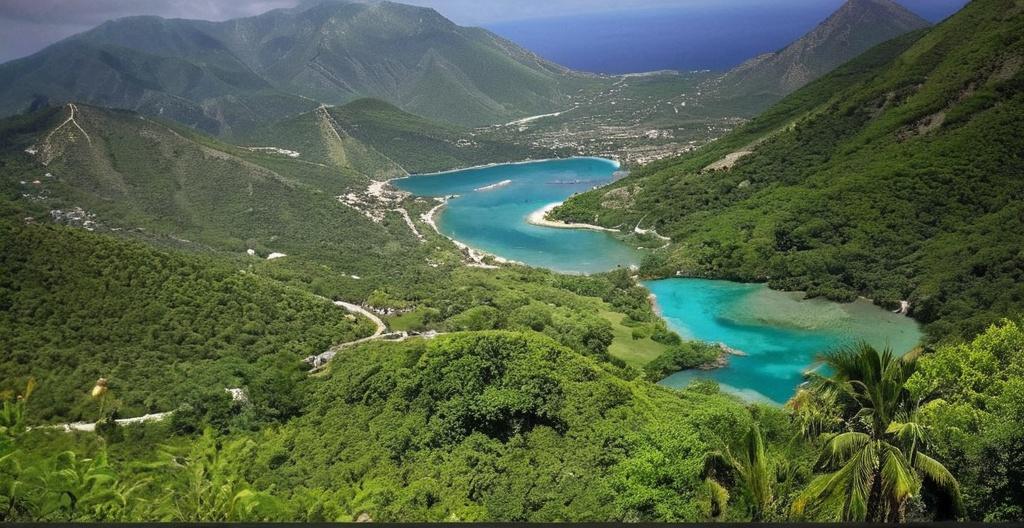Key Take Aways About Cap-Haïtien
- Cap-Haïtien is a city rich in history, culture, and natural beauty on Haiti’s northern coast.
- Travel is convenient via its international airport or a scenic road trip from Port-au-Prince.
- Diverse accommodations include boutique hotels and luxury stays like Hotel Mont Joli and Habitation Jouissant.
- Significant historical site, Citadelle Laferrière, is a must-visit.
- Cultural vibrancy evident in local art, music, and the Carnaval de Cap-Haïtien.
- Local cuisine features traditional dishes, with July 26th Street as a food hotspot.
- Natural attractions include Labadee’s beaches and Parc National Historique’s hiking trails.

Exploring Cap-Haïtien: A Peek into Haiti’s Northern Gem
Cap-Haïtien, nestled on Haiti’s northern coast, is an intriguing mix of history, culture, and natural wonders. Known for its well-preserved colonial architecture and rich historical background, Cap-Haïtien stands as a city where the past and present blend seamlessly.
Getting There
Traveling to Cap-Haïtien is relatively straightforward. The city is accessible by air, with its international airport serving as a gateway for both domestic and international travelers. Frequent flights connect Cap-Haïtien with Port-au-Prince and other Caribbean destinations. For those who fancy a road trip, driving from Port-au-Prince offers a scenic, albeit winding, view of the Haitian countryside.
Accommodations
Cap-Haïtien provides a variety of lodging options to cater to different preferences and budgets. From charming boutique hotels set in colonial buildings to more modern accommodations, there’s a place for every traveler. Notable options include the Hotel Mont Joli, offering panoramic views of the bay, and Habitation Jouissant, which combines luxury with a touch of history.
Historical Significance
The city is often dubbed the “Cradle of Haiti’s Revolution” due to its integral role in the Haitian Revolution. The Citadelle Laferrière, a massive fortress built in the early 19th century, stands as a testament to this historical era. It is one of the most visited sites in Haiti and offers breathtaking views of the surrounding landscape. A visit to this UNESCO World Heritage site is non-negotiable for history enthusiasts.
Cultural Insights
Cap-Haïtien is more than just its historical monuments. The local culture is vibrant and visible in its art, music, and festivals. The annual Carnaval de Cap-Haïtien is a colorful extravaganza that showcases lively parades, traditional Haitian music, and elaborate costumes. It’s a time when the city bursts into celebration, and visitors get to experience the local joie de vivre.
Local Cuisine
The flavors of Cap-Haïtien are a delight for the palate. Traditional Haitian dishes such as griot, diri ak djon djon, and banan peze are staples found throughout the city. For a local culinary experience, July 26th Street offers a rich selection of street food vendors. Whether it’s savoring fresh seafood by the beach or indulging in a hearty Creole meal at a local eatery, the food scene in Cap-Haïtien is not to be missed.
Natural Attractions
The city’s natural beauty is just as alluring as its historical and cultural offerings. The nearby Labadee is a private beach resort known for its stunning beaches and water sports activities. Here, one can relax by the sea, explore the coral reefs, or even zip-line over turquoise waters. If you’re more into unspoiled nature, the nearby Parc National Historique holds numerous hiking trails leading to beautiful views.
Conclusion: A trip to Cap-Haïtien is more than just a travel excursion; it’s an educational passage through time and culture. From the fortress of Citadelle Laferrière to the bustling local markets, the city’s unique blend of history, culture, and natural beauty offers something for every traveler. Whether you’re a history buff, a cultural enthusiast, or a nature lover, Cap-Haïtien promises an enriching experience that lingers long after you’ve left its shores.
